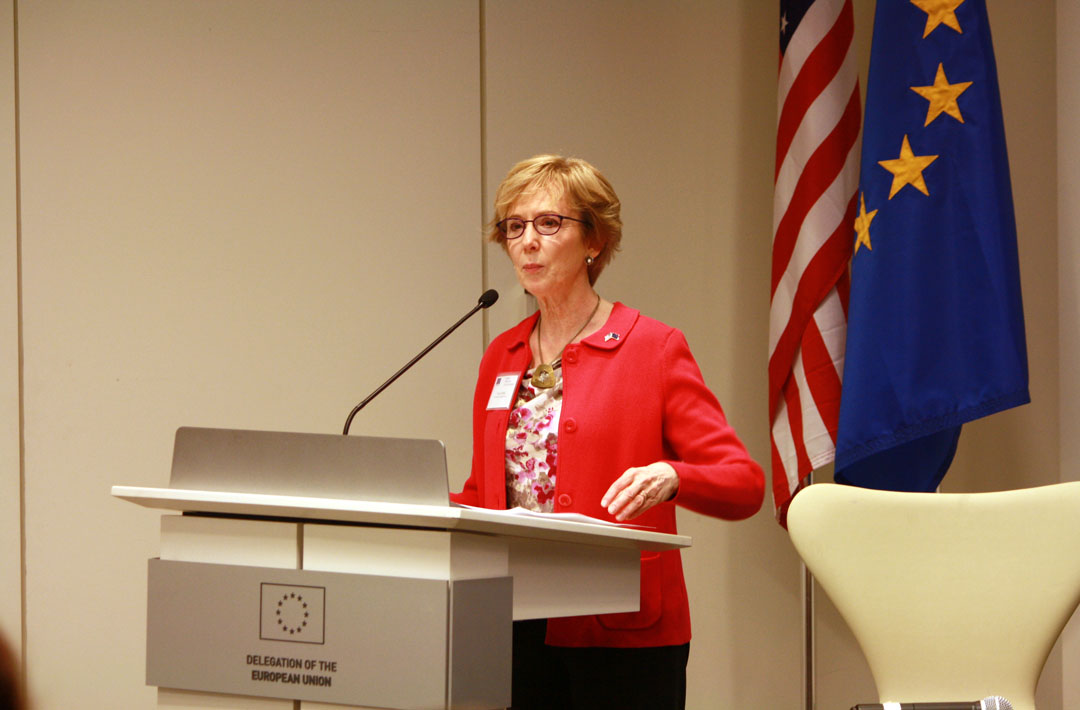By Sydney E. Allen
International trade and regulatory cooperation took center stage at a conference on International Regulatory Cooperation in Practice co-hosted by the George Washington University Regulatory Studies Center and the European Delegation to the United States.
“The EU and the U.S. are best friends of first resort,” said EU Ambassador to the U.S. David O’Sullivan, paraphrasing comments by Vice President Joe Biden, to the conference participants who included officials from the U.S. government and EU member states, academics, students and practitioners.
“(Both Europe and the U.S.) are trying to eliminate the unnecessary regulatory duplication between countries while maintaining the health, safety and well-being of our citizens,” said Mr. O’Sullivan. “We’ve got the same objectives.”
The conference was the second convened by the GW Regulatory Studies Center and the EU. It was designed to foster discussion on improving cooperation between regulators internationally.
The gathering comes shortly after the release of a new report by the GW Regulatory Studies Center under a grant from the EU titled, US-EU Regulatory Cooperation: Lessons and Opportunities. In the study, former government officials examine how cooperation has worked in practice between U.S. regulatory agencies and their EU counterparts, including the U.S. Transportation Department, the FDA and the Consumer Product Safety Commission.
In his remarks, Mr. O’Sullivan echoed the findings of the report that unnecessary regulatory differences between countries persist as lingering barriers to trade and stressed the importance of getting it right with the Transatlantic Trade and Investment Partnership (TTIP).
“We have been negotiating for three years, which is not a long time for trade negotiations of its kind,” he said. “We will see what we can do this year. There are challenges on both sides. But we should not be discouraged by some of the critical voices.”
Former U.S. Ambassador to the EU C. Boyden Gray told conference attendees that “the heart of TTIP is regulatory cooperation.” But he noted that regulators were cooperating and reducing regulatory barriers to trade even without a trade agreement.
Experts throughout the day reaffirmed the significance of the regulatory barriers and the progress being made to reduce them.
Daniel Pérez, GW Regulatory Studies Center policy analyst and co-author of the GW report, moderated a panel on regulatory coherence in transportation. Panelists from the U.S. DOT, the European Aviation Safety Agency and the private sector stressed the importance of regulatory cooperation in aviation technology for the safety of air passengers worldwide.
They agreed that regulations that focus on outcomes not only served safety objectives but also could facilitate trade and encourage innovation.
“A (regulation) has to be flexible enough for innovation but also enforceable,” said Gregory Bowles, vice president of global innovation and policy at the General Aviation Manufacturers Association.
In an afternoon panel on consumer products, food and health care, Nancy Nord, former commissioner on the CPSC and co-author of the GW report, underscored that international regulatory cooperation is essential to the global economy. She and other panelists highlighted the value of sharing information at all stages of regulation from identifying a problem to taking enforcement actions.
Denis Redonnet, head of the strategy division for trade in the European Commission, supported panelists’ view that regulators and the public need to be shown the benefits of improved cooperation, saying, “We have to start seeing the value in trade agreements.”
Susan Dudley, director of the GW Regulatory Studies Center, and Damien Levie, head of the Trade and Agriculture Section of the EU Delegation to the United States, provided concluding remarks at the conference.
“This conference was a great opportunity to bring together regulators and academics,” Mr. Levie said.
Ms. Dudley said the conference left her optimistic, “There may be more going on than is visible to the casual observer,” she said. “We’re seeing cooperation where it’s most needed.”


